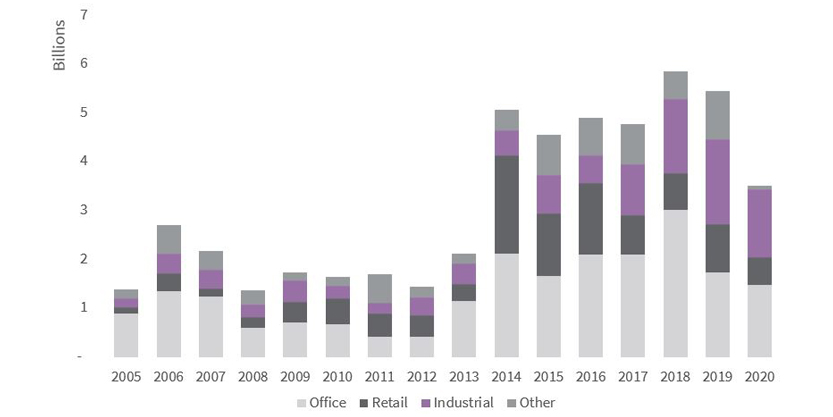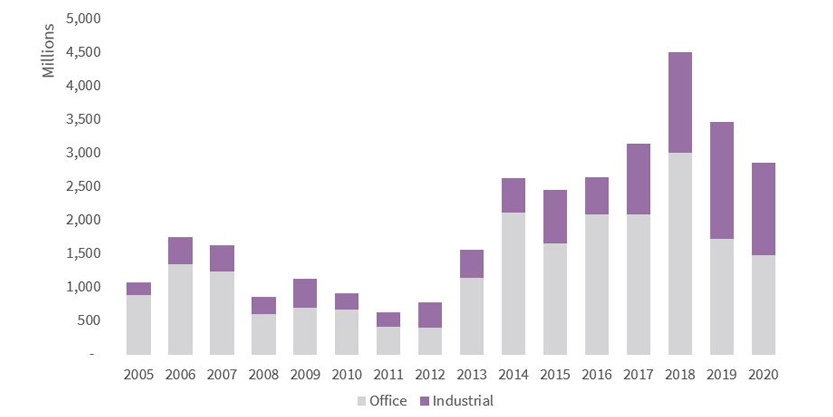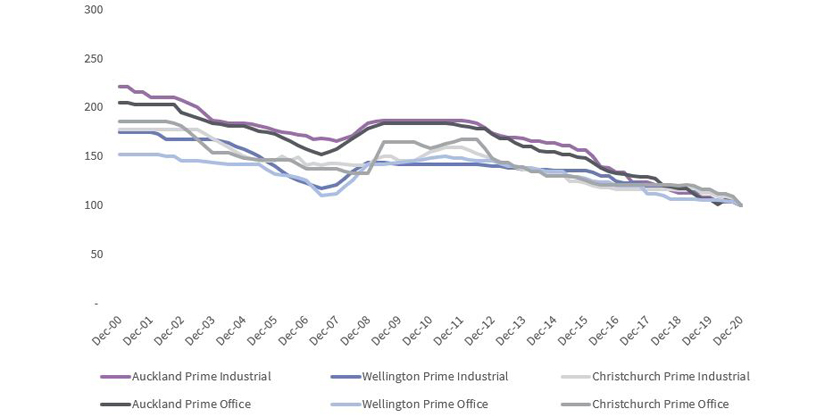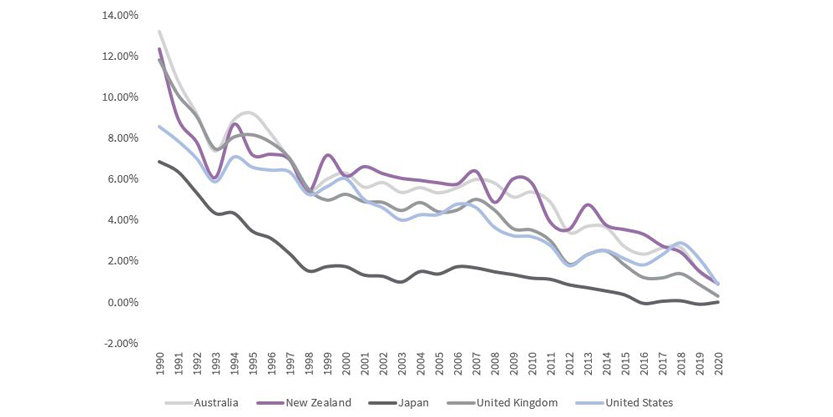Prime yields in NZ meeting in the middle
We are seeing a convergence of prime office and industrial yields across NZ markets as investors shift their focus to individual asset characteristics
New Zealand is an attractive real estate investment destination for offshore capital sources. Investors are drawn to New Zealand’s strong GDP growth, liveability attributes (supporting population growth), transparent real estate markets and, particularly for core investors, low volatility of returns through property market cycles. As a result, we have seen a strong uptick in investment volumes in the New Zealand real estate market since 2014 (30% from offshore). A decline in 2020 was partly due to COVID-19 but also limited product availability.
Transaction trends
Figures 1: NZ annual sale transaction by sector
The office sector remains the most traded (in terms of NZ$ transacted), but industrial transactions have grown significantly over the last six years. In 2014, office contributed to 42 per cent of the total NZ transaction volume, retail 40% and industrial only 10%. Fast-forward to 2019 (pre-COVID), office and industrial equally contributed around 32 per cent of NZ transaction volume.
Figures 2: NZ annual sale transaction – Office and Industrial
The lockdowns and border closures of 2020 slowed the market, resulting in transaction volume falling by 36 per cent year-on-year. Despite this, quality office and industrial assets with strong covenants continued to attract strong interest (42% and 40% of total transactions, respectively).
Prime asset yield compression
Prime office and industrial yields have followed a clear downward trajectory over the past 20 years. More recently, prime office and industrial yields have converged (Figure 3) as investors focus on individual asset investment quality and have a greater understanding of the strengths underpinning industrial and logistics.
In Auckland specifically, the yield spread had narrowed to 6 bps between the average prime office yield (4.69%) and the average prime industrial yield (4.75%) in 4Q20. Compare this to 20 years ago, the spread was then 88 bps (9.63% versus 10.50%).
We believe there are six key risk factors that influence real estate asset selection – location, characteristics, quality of covenant, Weighted Average Lease Expiry (WALE), outstanding capex requirements, and rent profiles relative to the market.
These factors are not weighted equally and are highly dependent on the macroeconomic environment, but all are key considerations for investors. In an environment of uncertainty, investors are gravitating towards prime/modern assets with a long WALE profile. This has resulted in the convergence of prime office and industrial yields.
Figures 3: Prime office and industrial yield
Bond yields have also converged across mature economies, as illustrated in Figure 4 (although continue to be volatile in the short term, e.g., NZ has jumped to 1.7% in 2021). This reflects a lower return environment and Central Bank intervention in many parts of the world during and after the Global Financial Crisis to promote continued economic activity.
Often used as an important benchmark and with a close relationship with property yields, the structural decline in bond yield levels normally puts downward pressure on market risk premiums and, therefore, on prime property yields to compress.
Like bond yields converging across mature economies, prime office and industrial yields across Auckland, Wellington, and Christchurch are also converging, as illustrated in Figure 3.
Figures 4: Mature economies 10-year Government bond rates
As New Zealand continues its economic recovery path, we believe that prime office and industrial assets will be attractive to domestic investors and offshore capital sources.
A number of offshore capital sources view New Zealand as an extension of their Australian investment mandate and will seek exposure to New Zealand as part of a diversified Asia Pacific real estate portfolio.
Core assets with long WALEs and strong covenants will see strong investor interest in 2021. However, an improvement in the economy will see the number of core plus/value add mandates increase as some investors take on additional risk to generate higher returns.







